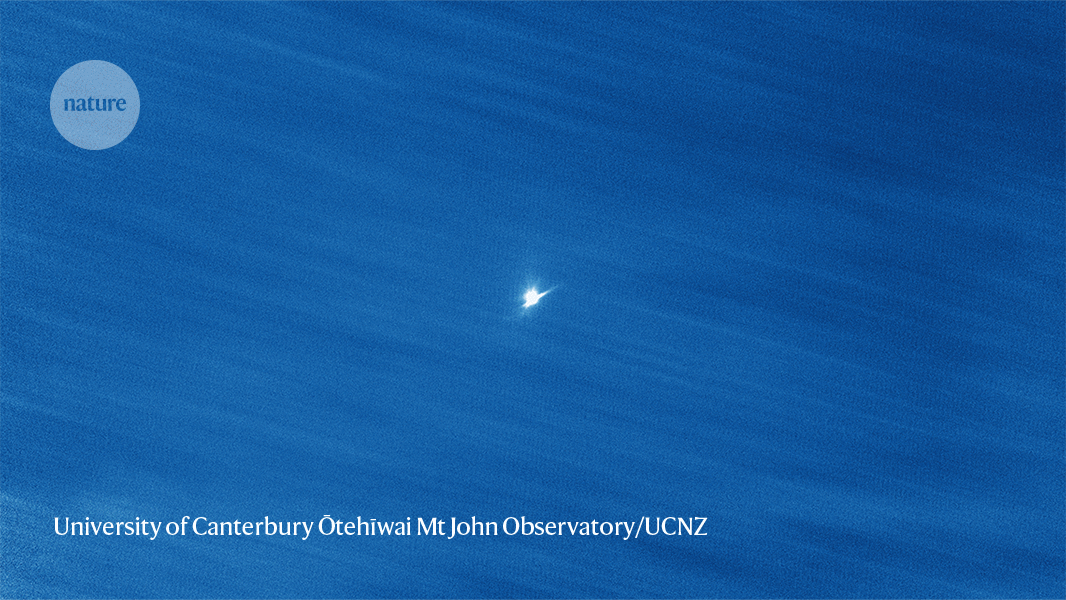The first look at Dimorphos, a system of accelerated objects crashing into astrophysical objects: I. The impact on the asteroid
Images captured by space and ground-based telescopes before and after the impact are helping scientists piece together what happened when the spacecraft crashed into Dimorphos at about 14,000 miles per hour (22,530 kilometers per hour).
The DART team calculated that the transfer of momentum when the spacecraft hit the asteroid was 3.6 times greater than if the asteroid had absorbed the spacecraft and no material was blasted from the surface. The impact on the asteroid caused it to move more than the spacecraft could, the researchers said.
The first look at an asteroid may have been amazing, but it is only one perspective of the system that we have seen.
The collision was observed by the Hubble Space Telescope and James Webb Space Telescope, and there were plumes of material released from the Dimorphos.
The Italian satellite LICIACube took the first images, showing the DART event from a safe distance. The best part? We’re going to see so much more over the next two months.
It’s difficult to predict who will win these prestigious awards because the nominators, short list and the selection process are kept from public view.
CNN News Editorial: CNN Women in Physics, Molecular Biology, Chemistry and the Study of Measuring the First Stars and Galaxies
A number of women are worthy candidates, including Dr. Mary-Claire King, who discovered cancer-causing genes.
Meet more of the female scientists on CNN’s list and learn about the revolutionary discoveries they’ve made in vaccine research, astronomy and chemistry.
Humans can be dangerous in places where glaciers meet the ocean. Monitoring the acoustics of these dense bodies of ice from afar is changing how researchers understand them and what we know about how their sounds impact the animals living in these disappearing habitats.
On April 14, 1912, the British merchant steamship had sent a message to the RMS Titanic, but the iceberg warning never reached the massive ocean liner’s main control center on that fateful night.
20 people lost their lives when a German submarine torpedoed the Mesaba six years later. The location of the vessel has been a mystery.
Webb spotted the “bones” of a stunning spiral galaxy located 29 million light-years from Earth, a feat even more surprising when compared with Hubble’s view of the same galaxy.
Some of the earliest stars and galaxies in the universe were determined by the astronomer to be in a first image by Wds.
– The Hubble Space Telescope may get a boost into a higher orbit to extend its life, depending on the findings under a new exploratory agreement between NASA and SpaceX.
The city of Greenfieldboyce, California,: Asteroids can be diverted by the recoil force – Andy Cheng, a planetary astronomer
GreenfieldboyCE: Andy Cheng is one of the lead investigators for this mission. He says there was so much rocky material shooting out, the asteroid got an extra kick.
The results could be applicable to future hazard because NASA demonstrated this technique only on one asteroid. “It means that we can quickly design a mission to deflect an asteroid if there is a threat, and we know that this has a very high chance of being effective,” says Franck Marchis, a planetary astronomer at the SETI Institute in Mountain View, California.
“What we can learn from the DART mission is all part of a NASA’s overarching work to understand asteroids and other small bodies in our Solar System,” said Tom Statler, program scientist for DART at NASA, in a statement.
“Momentum transfer is one of the most important things we can measure, because it is information we would need to develop an impactor mission to divert a threating asteroid,” said Andy Cheng, DART investigation team lead from the Johns Hopkins Applied Physics Laboratory in Laurel, Maryland, in a statement.
The discovery of more information is giving researchers a better idea of why the asteroid was hit in the first place.
The colour change was confirmed by the NASA facility in Hawaii, as reported by a planetary scientist at Northern Arizona University. She says that there is a lot of material from Dimorphos thrown off. The impact blasted through the asteroid’s weathered interior and exposed part of its insides, making everything look redder — at least until the fresh material dissipated.
The city of Greenfieldboyce Images stopped when the spaceship went down. But telescopes on the ground and in space showed that the impact kicked up a huge cloud of dust and debris.
CHENG: The same way that if you fire a gun and you shoot a bullet back that way, the gun kicks back against you. So that’s – the recoil force is an extra force that’s pushing against the asteroid.
GREENFIELDBOYCE: If a asteroid is headed our way, he reckons scientists will have more confidence in their ability to block it because of the greater degree of warning. After the impact, astronomers watched fascinated as the cloud of debris around Dimorphos evolved into a long comet-like tail. The telescopes can still detect it. Cristina Thomas is an astronomer with Northern Arizona University.
NPR’s Theorem on a Rush: Towards Accuracy and Accessibility of the NPR Recordings in the Presence of Uncertainties
NPR transcripts are created on a rush deadline by an NPR contractor. This text may not be in its final form and may be updated or revised in the future. It is possible that accuracy and availability are not the same. The authoritative record of NPR’s programming is the audio record.
